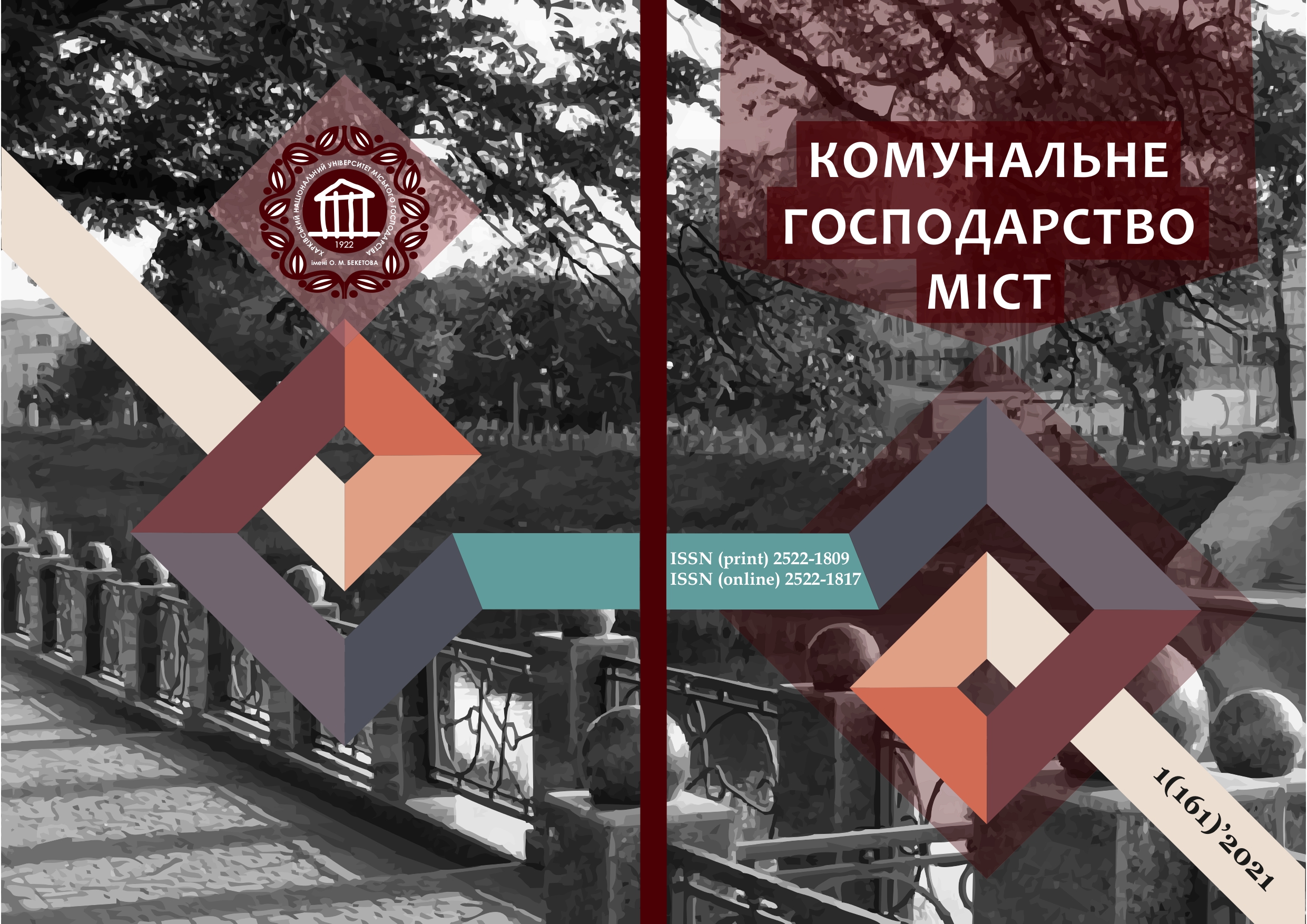EXPERIMENTAL VERIFICATION OF CONSTRUCTIVE SOLUTION OF A NEW TYPE FRAMEWORK
Array
Keywords:
deformation, deflector, cavity, load, test, tank.Abstract
Experimental verification is an integral part of the study for both new designs and new materials and technologies. To assess the features of deformation of the lightweight frame, a series of tests using the method of hydrostatic loading, developed at the Department of Building Structures O.M. Beketov national university of urban economy in Kharkiv. A fragment of a monolithic reinforced concrete frame with a floor slab with a span of 6.0 m and a thickness of 500 mm (thickness of both claddings 100 mm, liner thickness 300 mm) was selected as the object of study. The purpose of the study is to assess the deformability of lightweight frame structures. The tests were implemented under the action of short-term and long-term evenly distributed loads, and were carried out in accordance with the method of hydraulic tests of plates and shells on the basis of the requirements of DSTU B B.2.6-7: 95. For research the research method based on hydrostatic loading of object when loading is set by weight of water is used, and its size is regulated by height of a water column. To carry out the described test procedure on the mezzanine floor of the seventh floor was assembled inventory pool of formwork panels with dimensions in terms of 5.2x2.8 m and a board height of 1.15 m. To register the measured displacements, sensors are supplied to the object under study, which allow to establish the characteristics of the stress-strain state of the object of study. Use of this method, in comparison with other existing, allows to define durability and deformability of various full-scale designs at short-term and long loading without their destruction and a stop of production process. The obtained results of field testing of a fragment of a lightweight frame indicate that the nature of the deformation of the floor under load correlates with the results of similar studies that have been repeatedly conducted for the frames of buildings with load-bearing elements with a continuous cross section.
References
2. Adler Yu.P., Makarova O.W., Granovsky Yu.V. (1976). Planning an experiment in finding optimal conditions. Мoscow, Russia: Science, 279.
3. Zedginidze I.G. (1976). Experiment planning for the study of multicomponent system. Science, 390.
4. Shmukler V.S., Chuprinin A.A., Abbasi R. (2009). Device for field tests of plates and shells. Patent of Ukraine for useful model.44125 G01M 19/00, G01N 3/00 G01M 5/0; №u200901598; declared 24.02.2009; published 25.09.2009, №18.
5. Abassi R. (2010). Method of field tests of plates and shells. Kharkiv, 175.
6. Rational Design of Structural Building Systems, (2019), V. Babaev, I. Ievzerov, S. Evel, A. Lantoukh-Liashchenko, V. Shevetovsky, O. Shimanovskyi, V. Shmukler, M. Sukhonos / DOM publishers, Berlin / Germany, 384.
Downloads
Published
How to Cite
Issue
Section
License
The authors who publish in this collection agree with the following terms:
• The authors reserve the right to authorship of their work and give the magazine the right to first publish this work under the terms of license CC BY-NC-ND 4.0 (with the Designation of Authorship - Non-Commercial - Without Derivatives 4.0 International), which allows others to freely distribute the published work with a mandatory reference to the authors of the original work and the first publication of the work in this magazine.
• Authors have the right to make independent extra-exclusive work agreements in the form in which they were published by this magazine (for example, posting work in an electronic repository of an institution or publishing as part of a monograph), provided that the link to the first publication of the work in this journal is maintained. .
• Journal policy allows and encourages the publication of manuscripts on the Internet (for example, in institutions' repositories or on personal websites), both before the publication of this manuscript and during its editorial work, as it contributes to the emergence of productive scientific discussion and positively affects the efficiency and dynamics of the citation of the published work (see The Effect of Open Access).

